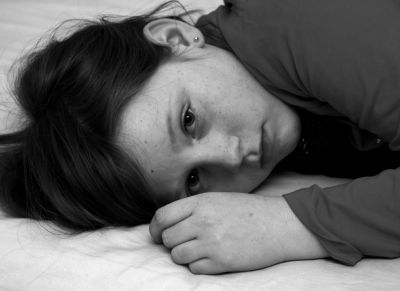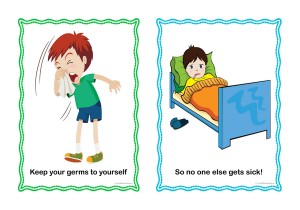Gastroenteritis (gastro) is a very common illness in infants and children. It is usually caused by viruses that infect the bowel. It tends to be more common during the winter months.
What is gastroenteritis?
Typically, gastro begins with vomiting. Children then develop frequent, watery poos (diarrhoea). Often children may have tummy pain and fever with the diarrhoea. Some children may have a runny nose or a sore throat.
Gastro usually lasts for three or four days. It may take a week or so for the poos to become normal.
Some bacteria (germs) may also cause vomiting and diarrhoea in children. Higher or more prolonged fevers, more severe tummy pain, and blood or mucus with the diarrhoea may suggest that gastro is caused by bacteria. These bacterial infections are sometimes linked to food poisoning.
How is gastro spread?
Viral gastro can be easily spread from person to person.
Gastrointestinal diseases spread when the germ enters the body by the mouth. This can happen when:
• people eat contaminated food or drink contaminated water
• infected people do not wash their hands effectively after using the toilet—contaminated hands can then contaminate the food that may be eaten by others or surfaces that other people may touch before touching their mouth
• a person changes the nappy of an infected infant and does not wash their hands effectively.
Incubation period
- Viral and bacterial gastroenteritis usually takes 1–3 days for symptoms to appear. Symptoms of parasitic gastroenteritis can take 5–15 days to appear.
Infectious period
Children are infectious for as long as the germs are present in their faeces. The germs causing gastroenteritis can be in faeces even if the person does not have any symptoms, or after the symptoms have stopped.
Exclusion period
Children, educators and other staff with infectious diarrhoea should be excluded until the diarrhoea has stopped for at least 24 hours.
Responsibilities of Educators and Other Staff
• Advise the parent to keep the child home until they are feeling well and they have not had any symptoms for at least 24 hours.
• Make sure staff and children always practise effective hand hygiene.
• Educators and other staff who handle food must not return to work until they have been symptom-free for 48 hours.
• Ensure that appropriate cleaning practices are being followed in the education and care service.
• Contact your local public health unit if two or more people are ill. Public health workers may be able to identify how the germ has spread through the education and care service, and help prevent further infection. They may also advise if any particular cleaning or disinfecting is required.
Responsibilities of parents
• Ensure that babies are vaccinated against rotavirus.
• Keep the child at home until they are feeling well and have not had any symptoms for at least 24 hours.
• Encourage effective hand hygiene at home.
Controlling the spread of infection
• Ensure that adults or children who are ill are excluded for the appropriate period.
• Ensure that staff and children always practise appropriate hand hygiene.
• Ensure that appropriate cleaning practices are followed.
• Ensure that staff who have diarrhoea do not prepare food for others.
• Keep cold food cold (below 5 °C) and hot food hot (above 60°C) to discourage the growth of bacteria.
Treatment
The main risk of gastroenteritis is dehydration, especially in children—a child with gastroenteritis may become very ill and may need to go to the hospital. People with diarrhoea need extra fluid to replace what they lose through vomiting and diarrhoea.
Fluids
In our community, most children with gastro recover quickly. The major concern with gastro is that children can become dehydrated (dry) due to loss of fluid in the vomit and diarrhoea. Younger children, or children with other health problems, may become dehydrated more quickly. Encouraging your child to drink fluids is very important. The fluids to use are described in the next section. Please read and ask questions so that you understand these very important instructions. Medicines to stop vomiting and diarrhoea are usually not helpful and can cause other problems in children.
Please consult your doctor or hospital, as soon as possible, if you have any concerns about your child's progress - especially if:
- Your child is less than six months old
- Your child has other health problems
- You are unable to get your child to take the right amount of fluids
- Your child keeps vomiting
- Your child is very tired or drowsy
- There is blood or mucus in your child's poo
- Your child has ongoing tummy pain
- Your child has high fevers
- If your child has unexpected symptoms(eg pain when passing urine, headache etc)
- Or if your child does not seem to be getting better
What to feed your infant child
If you are unsure about the information on this sheet or your child's condition, please see your doctor.
Acute vomiting and diarrhoea (runny poos) can rapidly lead to dehydration in infants and young children. Seek medical attention promptly, if you are concerned.
Frequent vomiting and runny poos mean your child may be losing a lot of fluid from his/her body. Lost fluid must be replaced - initially with SUITABLE FLUIDS or BREAST MILK.
Suitable fluids
Oral Rehydration Fluids (available from the chemist) are specially formulated to replace lost fluid rapidly. Oral rehydration solutions are specially designed to replace sugars and salts lost during an episode of gastroenteritis. It is preferable to give these over other clear fluids if it is available.
Clear fluids such as juice, cordial or soft drink may be used with caution if an oral rehydration fluid is not available but they must be diluted otherwise they may make the runny poos worse.
How to prepare suitable fluids
Name of Fluids
- Oral Rehydration Fluid (Gastrolyte - available from the chemist)
- Oral Rehydrating Fluid (Hydralyte - available from chemist & grocery store)
- Cordial Concentrate (Not low calorie/low joule)
- Soft drink or Juice (Not low calorie/low joule)
Directions for Dilution Of Fluids
- As per instructions on the packet
- Pre prepared as fluid or ice block
- 1 part in 20 parts
- 1 part in 5 parts
Examples of Dilution Of Fluids
- Mix with WATER only
- Do not mix with other fluids
- 5mL (1 teaspoon) + 100mL water
- 20mL (1 tablespoon) + 80mL water
How much fluid do I give?
Be patient, give your child small frequent amounts of fluid. Aim for at least 5mL fluid per kg body weight each hour. For example:
- for a 6 kg infant offer: 30mL every hour or 60mL every 2 hours
- for a 12 kg toddler offer: 60mL every hour or 120mL every 2 hours
Approximate volumes:
- Less than 6 months: see your doctor
- 6-23 months: 40 to 60 mL each hour
- 2-5 years: 60 to 100 mL each hour
- 6-10 years: 100 to 120 mL each hour
- 11-16 years: 120 to 160 mL each hour
It is important to start offering easily digested foods as soon as the vomiting stops - and no later than after 24 hours EVEN if the poos are still loose.
IF YOU HAVE ANY CONCERNS ABOUT YOUR CHILD'S PROGRESS, CONTACT YOUR LOCAL DOCTOR OR LOCAL HOSPITAL IMMEDIATELY.
What to do for a breastfed infant
- Continue breast feeding on demand or at least every 2 hours.
- In between breast feeds, water or oral rehyration solution may be offered.
- Do not give solids if your child is vomiting
When the vomiting has stopped or after 24 hours:
- Continue 2nd -3rd hourly feeds or on demand.
- In between breast feeds, water or oral rehydration solution may be offered.
- If your baby is on solids introduce simple foods such as rice cereal, potato or pumpkin - even if the poos are still loose.
What to do for the bottle fed infant or older child
While your infant or child is still vomiting:
- Replace formula or usual drinks with oral rehydration fluid (from chemist) or suitable fluids (see table "How to Prepare Suitable Fluids" in this article)
Aim to be back to usual strength formula/diet within 24 hours. If not, seek medical advice.
- Start usual formula or milk. Do not dilute
- Start usual formula or milk. Do not dilute
- Continue giving feeds or drinks every 2-3 hours or more frequently if demanded.
- Offer age appropriate foods at meal times even if the poos are still loose.
- Occasionally children will develop lactose intolerance and the loose poos will continue. Under medical advice he/she will need lactose free milk for approximately 1 month.
Remember
- If your baby is less than six months old and has gastroenteritis, see a doctor as soon as possible.
- Other members of the family may be affected.
- Young children tend to be affected most.
- Give enough fluids to cover normal requirements and to replace what is lost through vomiting and diarrhoea
References
Aussie Childcare Network acknowledges the co-operation of The Children’s Hospital at Westmead, Sydney Children’s Hospital and Kaleidoscope, Hunter Children’s Health Network in making this fact sheet available.
Disclaimer: This article is for education purposes only. Please consult with your doctor or other health professionals to make sure this information is right for your child.










